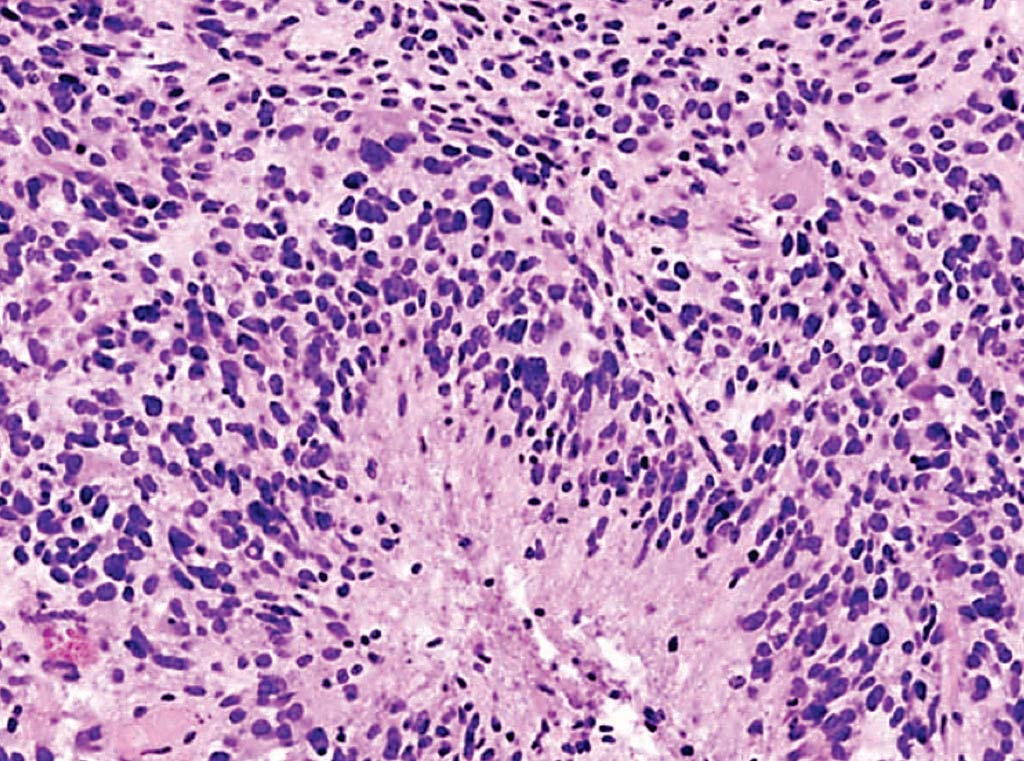Gene Identified That Drives Deadly Brain Cancer
By LabMedica International staff writers
Posted on 29 Dec 2016
Glioblastoma is the most common and aggressive brain cancer in adults and over 70% of patients with glioblastoma die within two years of diagnosis, though a gene has been identified that is overactive in a deadly form of brain cancer.Posted on 29 Dec 2016
A new study suggests that inhibiting that gene may improve the outlook for glioblastoma patients. Nicotinamide adenine dinucleotide (NAD+) plays a pivotal role in cancer cell metabolism, but how NAD+ impacts functional signaling events in glioblastoma is not well understood.

Image: A histopathology of cerebral glioblastoma showing marked cellularity, with marked hyperchromatism and pleomorphism. Note the prominent vascularity as well as the area of necrosis at the left with neoplastic cells palisading around it (Photo courtesy of KGH).
A large team of scientists from Washington University School of Medicine (St. Louis, MO, USA) provided clinical evidence that high expression of nicotinamide phosphoribosyltransferase (NAMPT), the rate-limiting step in NAD+ biosynthesis, in glioblastoma tumors is associated with poor overall survival in patients, and demonstrated NAMPT and NAD+ are required for the maintenance of patient-derived glioblastoma stem-like cells (GSCs). High NAMPT expression in tumors correlates with decreased patient survival.
Pharmacological and genetic inhibition of NAMPT decreased NAD+ levels and GSC self-renewal capacity, and NAMPT knockdown inhibited the in vivo tumorigenicity of GSCs. Regulatory network analysis of RNA sequencing data using GSCs treated with NAMPT inhibitor identified transcription factor E2F2 as the center of a transcriptional hub in the NAD+-dependent network. The team demonstrated that E2F2 is required for GSC self-renewal. Downstream, E2F2 drives the transcription of members of the inhibitor of differentiation (ID) helix–loop–helix gene family.
Albert H. Kim, MD, PhD, an assistant professor of neurological surgery, and senior author of the study said, “If you target the NAD+ pathway, you can disrupt the ability of the cancer stem cells to self-renew, and you can also make them more sensitive to radiation treatment. In a patient, that could mean that if you suppress the pathway, the same dose of radiation may be more effective at destroying the tumor.” The study was published on November 14, 2016, in the journal Proceedings of the National Academy of Sciences.
Related Links:
Washington University School of Medicine














